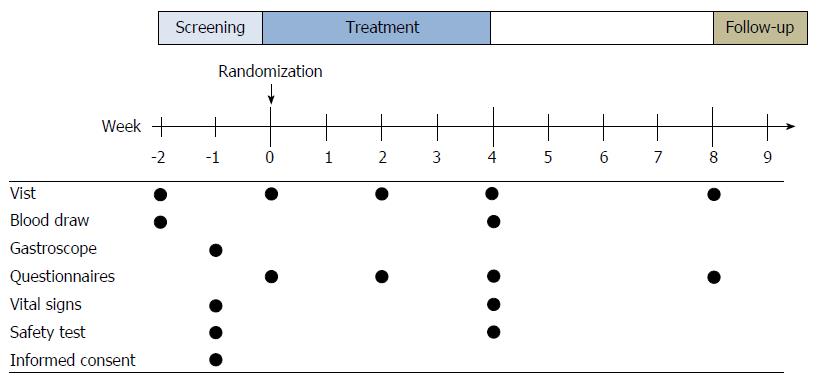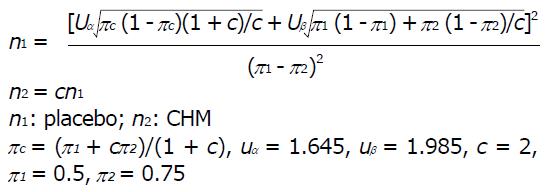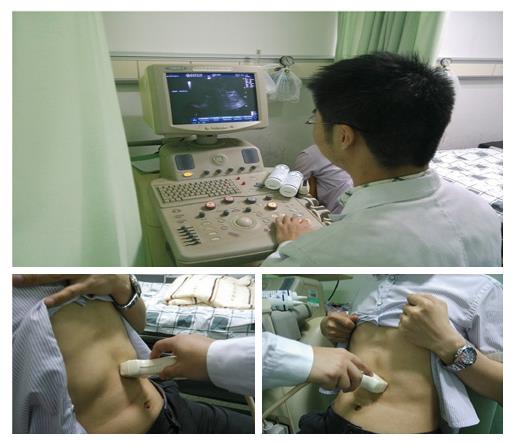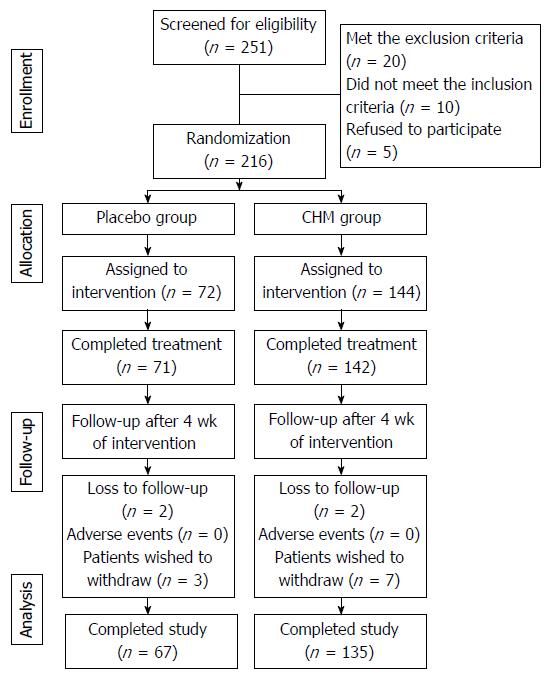Copyright
©The Author(s) 2017.
World J Gastroenterol. Aug 14, 2017; 23(30): 5589-5601
Published online Aug 14, 2017. doi: 10.3748/wjg.v23.i30.5589
Published online Aug 14, 2017. doi: 10.3748/wjg.v23.i30.5589
Figure 1 Study design.
There was a screening period of 2 wk before randomization. Blood draw, gastroscopy, and physical examination were performed and written informed consent were obtained from all patients in this period. Study visits were arranged at -2 wk, 0 wk, 2 wk, 4 wk and 8 wk. Some questionnaires were performed by phone during the treatment period, and this was followed by a 4-wk follow-up period.
Math 1 Math(A1).
Figure 2 Gastric ultrasonography.
Figure 3 Flow of participants in the study.
Figure 4 Postprandial discomfort severity scale.
A: Postprandial fullness; B: Early satiety; C: Epigastric pain; D: Epigastric burning. aP < 0.05 vs placebo group. CHM: Chinese herbal medicine.
Figure 5 Clinical global impression scale.
A: Very much worse since the initiation of treatment; B: Worse since the initiation of treatment; C: Slightly worse since the initiation of treatment; D: No change from baseline; E: Slightly improved since the initiation of treatment; F: Significantly improved since the initiation of treatment; G: Very much improved since the initiation of treatment. CHM: Chinese herbal medicine.
Figure 6 Traditional Chinese medicine symptom scores.
aP < 0.05, bP < 0.01 vs placebo group. TCM: Traditional Chinese medicine; CHM: Chinese herb medicine.
Figure 7 MOS 36-item short-form health survey.
GH: General health; PF: Physical functioning; RP: Role physical; RE: Role emotional; SF: Social functioning; BP: bodily pain; VT: Vitality; MH: Mental health. aP < 0.05, bP < 0.01 vs placebo group. CHM: Chinese herb medicine.
Figure 8 Hospital anxiety and depression scale.
aP < 0.05, bP < 0.01 vs placebo group. CHM: Chinese herb medicine; HADA: Hospital anxiety and depression scale-Anxiety; HADD: Hospital anxiety and depression scale-Depression.
- Citation: Lv L, Wang FY, Ma XX, Li ZH, Huang SP, Shi ZH, Ji HJ, Bian LQ, Zhang BH, Chen T, Yin XL, Tang XD. Efficacy and safety of Xiangsha Liujunzi granules for functional dyspepsia: A multi-center randomized double-blind placebo-controlled clinical study. World J Gastroenterol 2017; 23(30): 5589-5601
- URL: https://www.wjgnet.com/1007-9327/full/v23/i30/5589.htm
- DOI: https://dx.doi.org/10.3748/wjg.v23.i30.5589

















